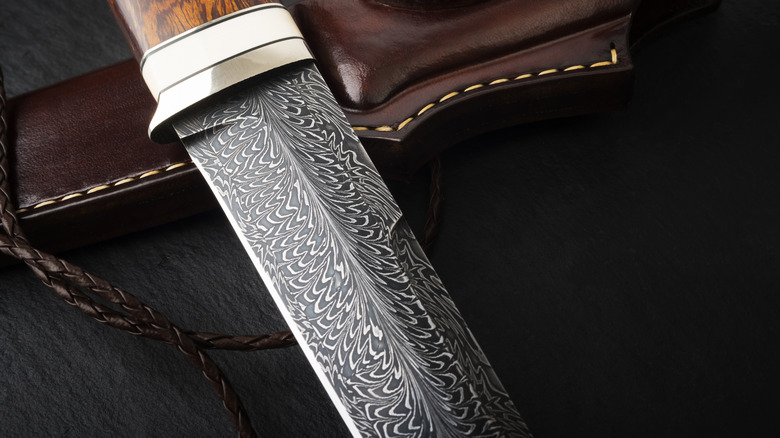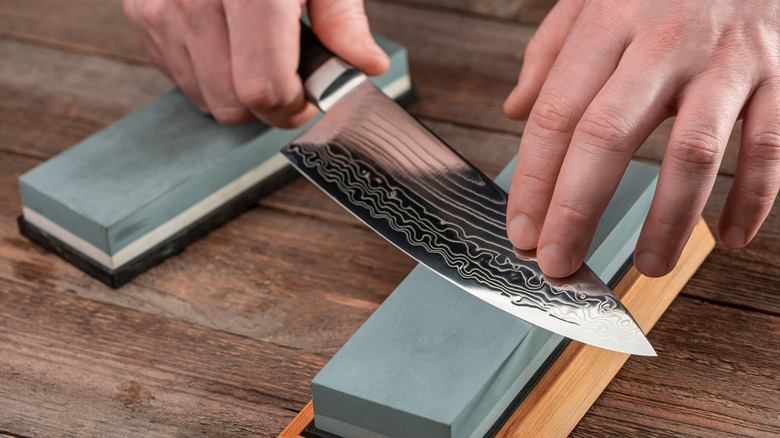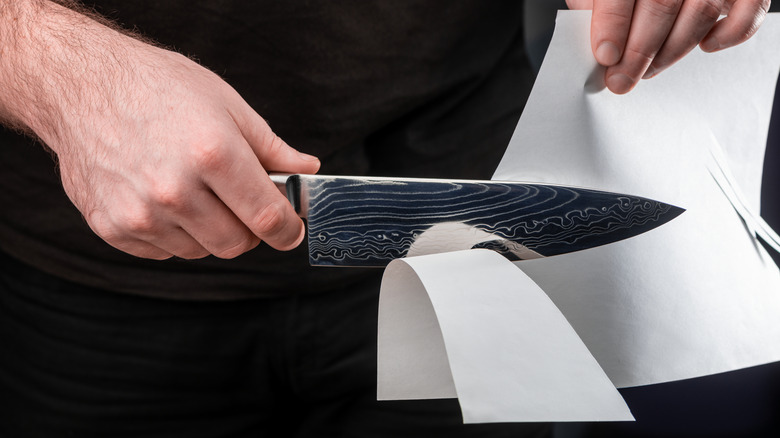What Are Damascus Steel Knives And Why Does Everybody Want One?
When a knife lives in a kitchen, it is a frontline warrior, tasked with keeping the chef happy and the meals smoothly executed. If that chef happens to be you, it's time to learn about Damascus steel knives and why everybody wants one. The intrigue centers on the steel blade and its components, including high quality, superior strength, exacting sharpness, and especially, the intricate layering technique achieved during a laborious forging process.
Those characteristics may not be evident at first glance, but one thing certainly is: the startlingly intricate swirled patterns carved into the steel. It's the defining trait of these knives, at least from a visual perspective. The wavy, mottled, complex pattern flows throughout the entire blade, from the spine to the tip, edge, and heel. Blade artists create the pattern using two types of layered alloys folded and forged into a powerfully resilient, hard, sharp blade. It's finished with acid etching to achieve a shimmery, polished appearance.
Damascus steel knives are highly regarded in professional kitchens, but increasingly show up in the knife collections of home chefs. Because they're flexible, the blades resist cracking under the pressure of heavy chopping or rapid-fire dicing, and they slide right through the thickest cuts of meat or thick-skinned fruits and veggies. You may be guessing these knives fall on the pricey side of kitchen tools — but that would be an understatement.
Why Damascus knives cost so much
You've heard of expensive kitchen knives and perhaps assumed it was a marketing technique or a trendy new knife on the culinary block. In the case of Damascus steel knives, it may just be the opposite. They've been around for centuries and need little, if any, hype. Many chefs consider the price justifiable based on the many hours spent by master craftsmen perfecting the layered blades and handles.
Some high-quality Damascus knives can fetch $5,000 and up, taking at least a month to create. A video featuring master bladesmith Zack Jonas explains how he stacks multiple layers of high-carbon steel and heats them to about 2,300 degrees Fahrenheit in the forge. Bolder patterns require fewer layers, while very intricate ones potentially need hundreds or thousands of layers.
These kitchen knives do carry a higher purchase price than others, but you don't have to spend thousands of dollars. Reputable kitchen stores offer relatively affordable ones at prices ranging from $100 to $500, or $700 and up depending largely on the number of forged layers, or the skill and reputation of the bladesmith.
The backstory of Damascus steel knives
Stories abound on the origin of Damascus steel, but there's evidence of prolific production in the Near East and Middle East dating back to at least 300 to 500 A.D., or even earlier. But it wasn't necessarily for preparing food. Instead, the Damascus steel forging technique more often than not involved sword making. Its name comes from what is currently the capital city of Syria.
The mystique and infamy of Damascus steel blades reportedly rose from the 11th-century crusades when Arab fighters employed them in European military excursions. Fortunately, the artistry of Damascus steelmaking now holds a more benign purpose as high-quality kitchen knives, facilitating precision and skill in domestic and professional kitchens.
It's believed that the earlier metal used was Wootz steel from India, which has largely been replaced in modern Damascus knife-making by high-carbon steel. Depending on the maker, the alternating layers can utilize softer metals such as stainless steel to provide more flexibility.



